DevSecOps is popular these days since there’s a lot of a grey area for securing your platform, applications, and infrastructure. Businesses are concentrating on learning about DevSecOps and moving to it. Security can no longer be divided into compartments. To improve security at every stage of the software development lifecycle, engineering teams must build it in from the start (SDLC).
People always think of – what does DevSecOps stand for? The answer is simple, i.e., it stands for development, security, and operations. The motive of DevSecOps is to improve safety and execute security decisions and activities at every step of the development process.
What is DevSecOps
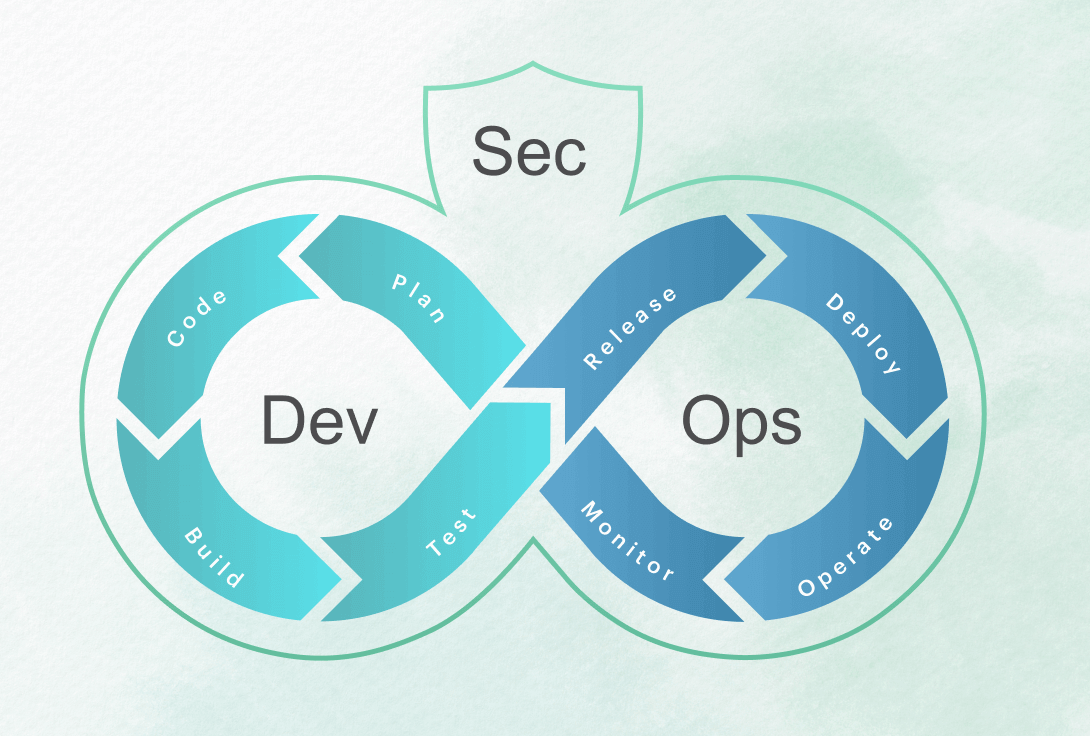
The DevSecOps definition states that it is an engineering strategy that eliminates silos and allows development, security, and operations teams to collaborate. The objective is to automate delivering secure software and infrastructure to production quickly and frequently.
Simply said, DevSecOps is a DevOps extension with a clear focus on security. Security becomes a shared burden among all team members with this plan. Vulnerability assessments are usually performed at the end of the development approach. As a result, there is more back-and-forth between teams, more costly solutions, and resource waste.
You can construct a cyclical process for testing the app throughout the development phase by implementing DevSecOps into your development pipeline. As a consequence, you’ll reduce app vulnerabilities, reduce team friction, and save money on compliance and security updates.
Why DevSecOps is needed
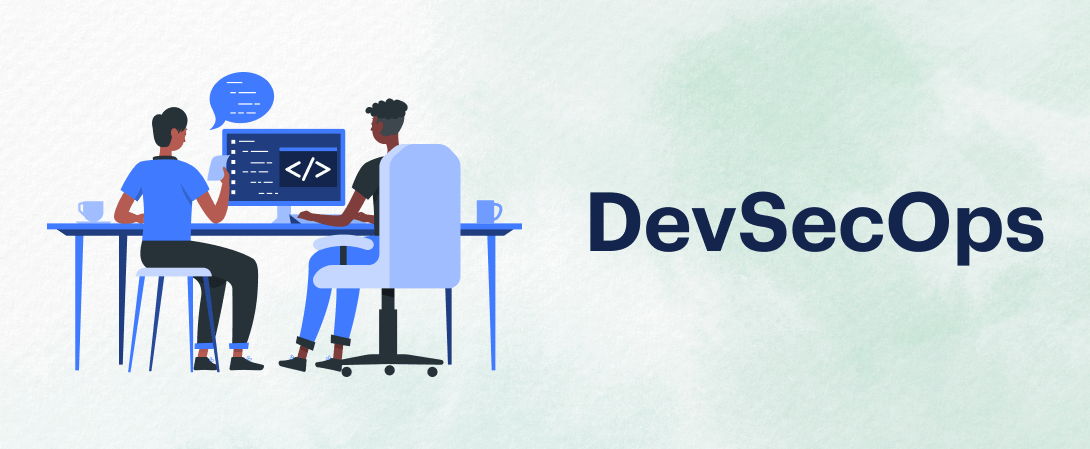
DevSecOps allows security protocols to “shift left.” This implies recognizing faults and issues before the development process to make security solutions easier and cost-effective. The plan is to reach “blanket security,” in which you enhance security check coverage and effectiveness, improve software quality, reduce downtime, and reduce the number of susceptibilities.
It’s straightforward. The sooner you discover a bug, the more quickly you can fix it. The more robotic the procedure is, the more time your security staff will focus on better pressing and complex challenges. DevSecOps brings it all together to give you a more streamlined, adaptable, and secure software development lifecycle.
What is the difference between DevOps vs. DevSecOps
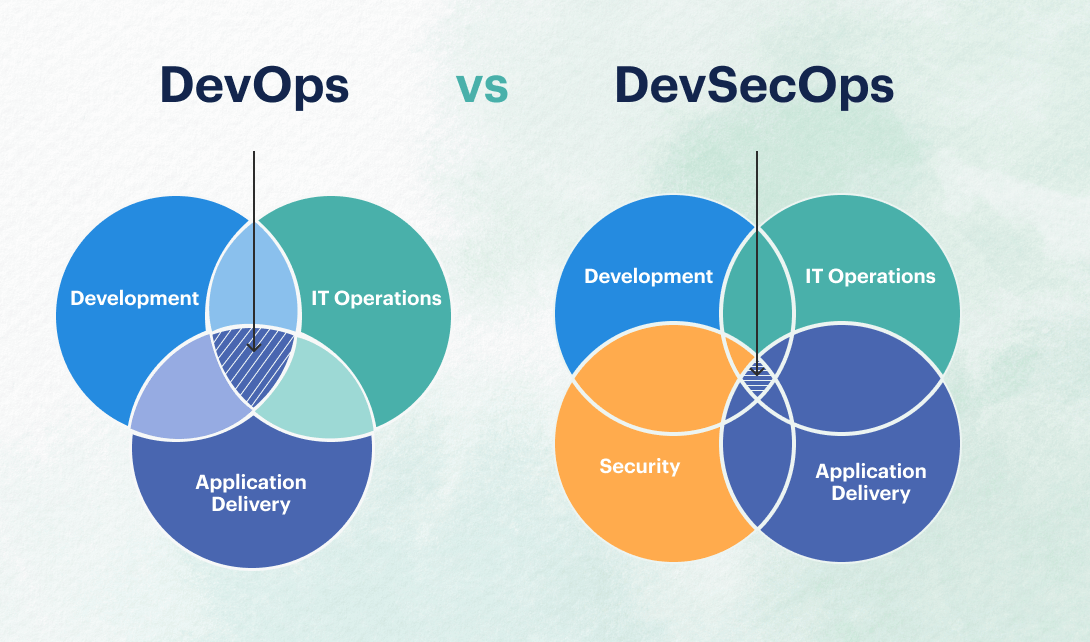
| DevSecOps | DevOps |
| It seeks to identify innovative solutions by removing silos between development teams and IT experts, allowing both parties to collaborate. | The development and operations teams collaborate to boost productivity. |
| Its primary goal is to deliver superior security while improving process speed, scalability, and accessibility. | It is heavily engaged in the day-to-day facets of the engineering procedure, with the primary goal of speed. |
| The purpose is to deliver a secure environment for sharing security choices while keeping the best speed, security, and control levels. | To decrease risk while delivering quality software faster, concentrate on collaboration, continuous integration, and automation to bridge team communication gaps. |
| Lower costs on resource management. | Assists end-to-end responsibility. |
| Decrease hazard and legal harm. | Streamlines the flow of development. |
| Can identify errors earlier on. | Continues to focus on the consumers. |
| Pipeline conflict and developer overabundance. | Restricted client feedback. |
| Shortage of AppSec tool integration. | Varying well-defined techniques to more effective ones. |
| A developer’s knowledge will indicate a sizable gap at the start. | Challenges in infrastructure to microservices. |
| App security starts during the process of creating it. | The idea of security starts right after the development channel. |
| Required to hold vast knowledge of cloud security and support infrastructure users. | Knowledge of various DevOps tools and technologies. |
How to implement DevSecOps
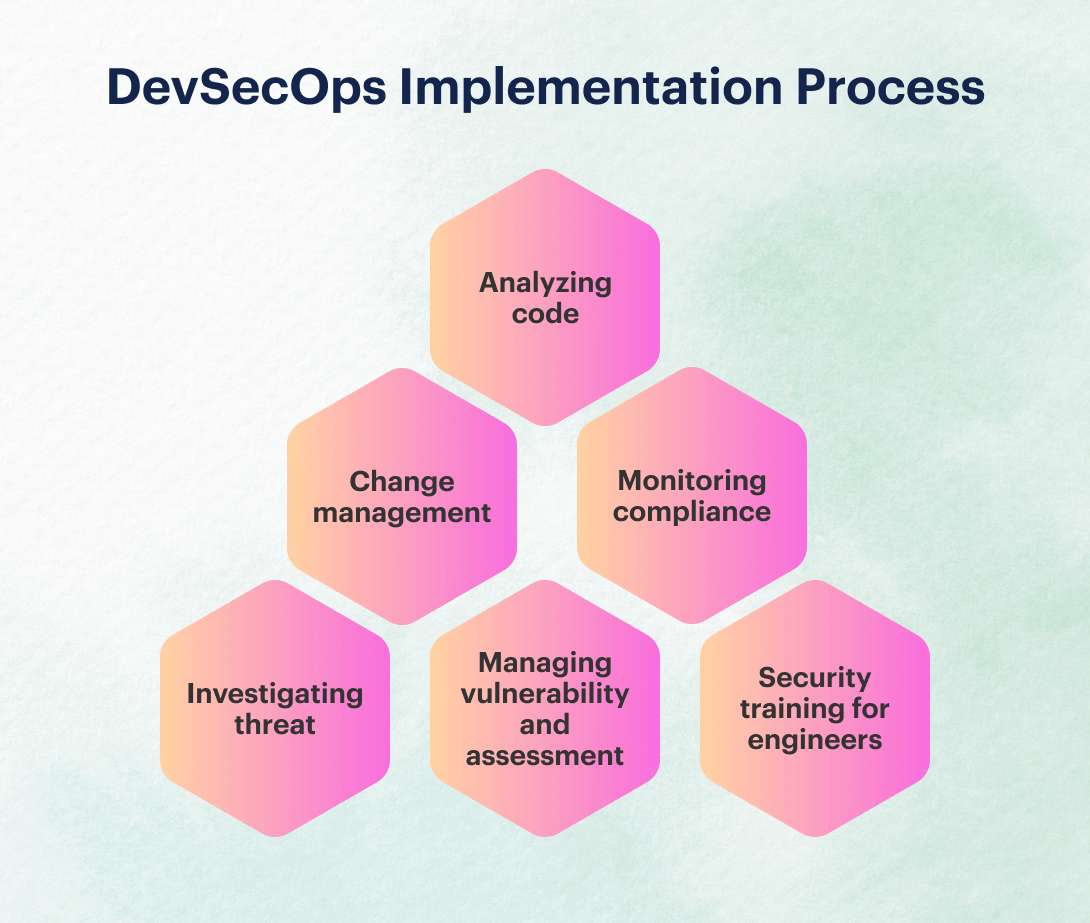
Below is the process of DevSecOps implementation process –
Analyzing code
Delivering code in minor, regular releases make it easier to spot flaws early while including code analysis in the quality assurance process.
Change management
Allow any developer to recommend a mission-critical security modification and approve the changes in 24 hours to drive the change management process efficiently.
Monitoring compliance
Collect proof of compliance before you begin coding or making modifications to ensure that you remain compliant at all times.
Investigating threat
Find out, investigate, and fix threats or vulnerabilities that have arisen due to the new code you have delivered to the organization.
Managing vulnerability and assessment
It’s critical to run periodic scans, code reviews, and penetration testing after you’ve released the code and performed vulnerability checks.
Security training for engineers
Send engineers to industry conferences or invest in security certifications to provide security-specific coding training.
Benefits of DevSecOps
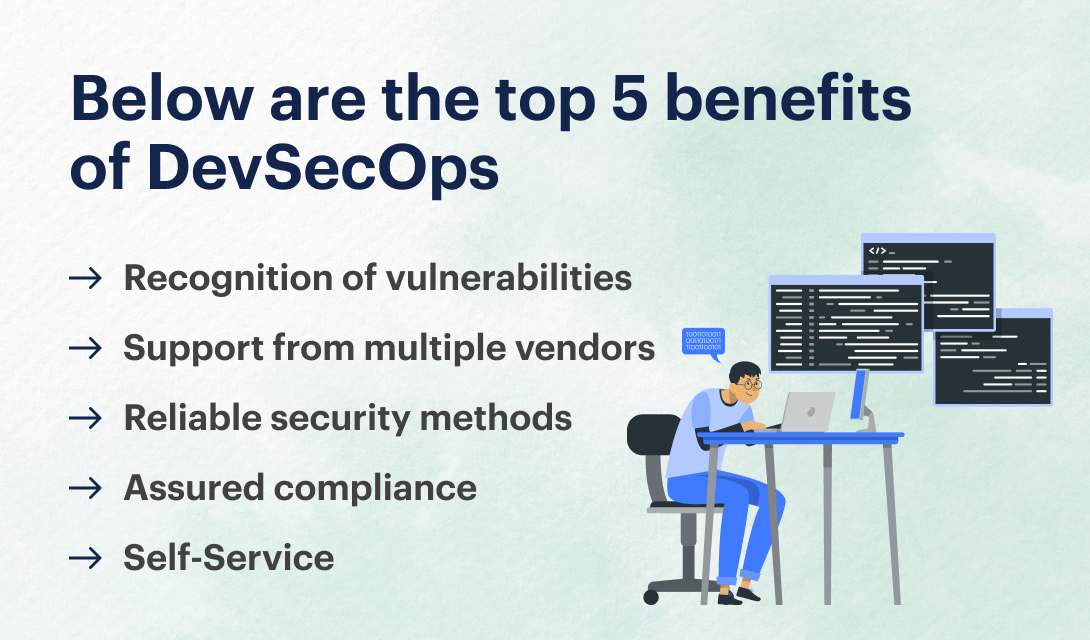
Below are the top 5 benefits of DevSecOps –
Recognition of vulnerabilities
The team of DevSecOps can speed up the detection and resolution of open-source concerns. Developers gain access to real-time analytics to detect vulnerabilities and compliance problems before they result in significant data loss or application harm. Regardless of waiting until the end of development to implement security, DevSecOps permits it to be integrated into the developer’s workflow.
Support from multiple vendors
DevSecOps provides a framework for integrating workflows that enable a multi-vendor, multi-cloud technology environment. Even when multiple vendors support the network, DevSecOps automation provides an application-centric view of the infrastructure.
Reliable security methods
Hearing about how DevSecOps increases security quicker may trigger some red flags regarding reliability. Regardless, DevSecOps’ pace does not necessitate cutting corners. DevSecOps engineers can improve the reliability of critical security operations by investing in automation and reducing the chance of human error.
Assured compliance
Eventually, DevSecOps is about improving and standardizing security considerations. Compliance is considered one of the most significant factors in this area. Compliance targets assist organizations in protecting client data and support them to avoid hefty fines and public criticism.
Self-Service
Continuous integration and delivery were born out of the requirement to update applications to incorporate new features and functionalities. However, updates to these apps necessitate changes to the supporting infrastructure, where bottlenecks occur. Low-code or no-code capabilities are provided by DevSecOps, permitting app owners to handle network aspects in a user-friendly manner.
DevSecOps best practices
Development teams should first recognize that automation is fine as long as automated security controls are included in the software development cycle to achieve a seamless process. Also, team members must use such tools that scan code for potential security problems. If flaws are discovered, threat modeling scenarios should be run to identify and then construct protection against matters that are seen as severe threats.
Conclusion
There is no denying that DevSecOps is changing the way businesses manage security. However, many mid and low-level companies are still apprehensive of moving to DevSecOps for various reasons. It includes a lack of awareness of what DevSecOps is, an unwelcome culture shift for employees’ funding constraints, sometimes just the phrase’s ambiguity.
The technical and financial benefits that organizations can gain from using DevSecOps are promising. Although there will undoubtedly be some setbacks when you first begin, DevSecOps can be highly beneficial to your firm in the long term. The above blog narrates a piece of in-depth information on DevSecOps.









